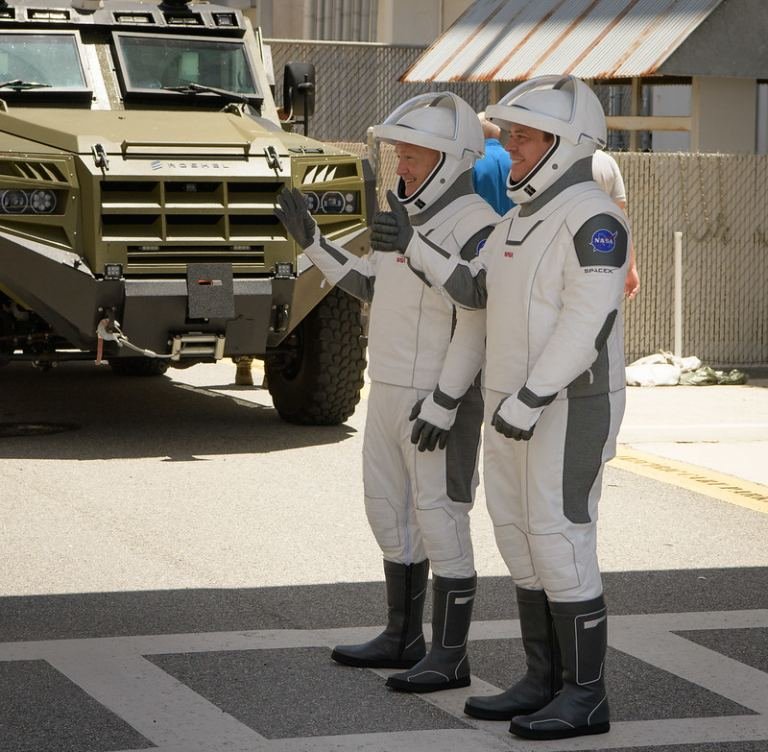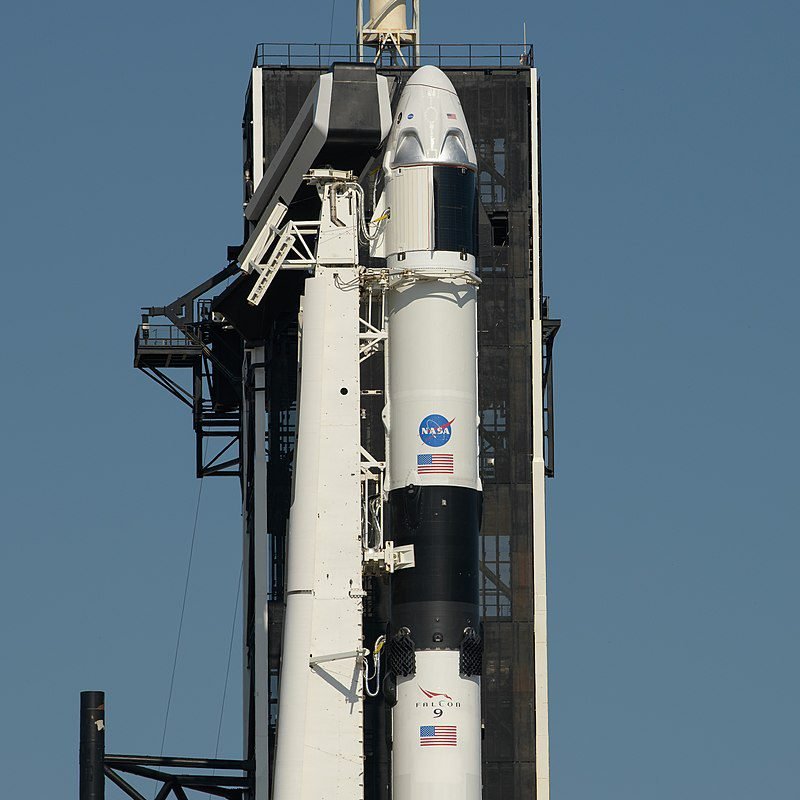The first time in history, a private company, SpaceX, will send astronauts to International Space Station this Wednesday.
Source: Universe Today
Nearly nine years since Space Shuttle Atlantis on mission STS-135 landed at the Kennedy Space Center on July 21st, 2011, crewed missions are about to resume from U.S. soil this week, with the launch of a SpaceX Falcon 9 rocket with the historic Crew Dragon Demo 2 mission, carrying NASA astronauts Douglas Hurley and Robert Behnken to the International Space Station. And with any luck and clear skies willing, you may just be able to spy the mission chasing down the station Wednesday night or Thursday morning.
Note that astronauts’ uniform is very similar to the one from 2001: A Space Odyssey.


Crew Dragon is expected to liftoff from Launch Complex 39A at the Kennedy Space Center on the Florida Space Coast on Wednesday, May 27th at 20:33 Universal Time (UT)/4:33 PM Eastern Daylight Saving Time (EDT). That’s 25 minutes behind the International Space Station in its orbit. European and United Kingdom-based observers should see Crew Dragon visible at dusk around 15-20 minutes after launch from Florida. Dragon will also pass very near the waxing crescent Moon, another plus.
If launch does not occur on Wednesday, it will slip back to Saturday, May 30th at 3:22 PM EDT/19:22 UT. NASA TV will carry the launch live starting at 12:15 PM EDT/16:15 UT.
You can follow the launch through the video below on Youtube.
Heavens-Above is your best bet for up-to-date information on current ISS passes worldwide. The site already has a ‘Crew Dragon’ link on their front page, in anticipation of tomorrow’s launch.
Last year’s automated Crew Dragon Demo One (COSPAR ID 2019-011A) generated two objects in orbit: the spacecraft plus the spacecraft trunk, which was jettisoned prior to reentry. Demo 2 will stay at the ISS for four months, for a return in late September 2020. Crew Dragon Demo 2 should pop up on Space-Track’s catalog at COSPAR ID 2020-032A shortly after launch.
Outsourcing launches for ISS. NASA can focus on missions to Moon, Mars, and beyond.




Happening now:
https://youtu.be/bIZsnKGV8TE
The launch has been postponed.